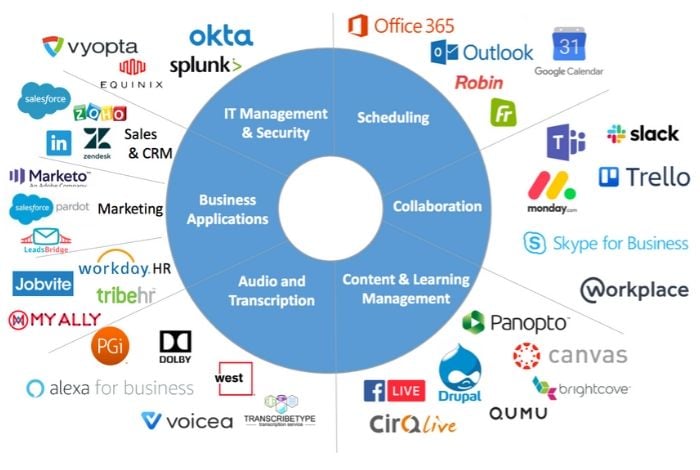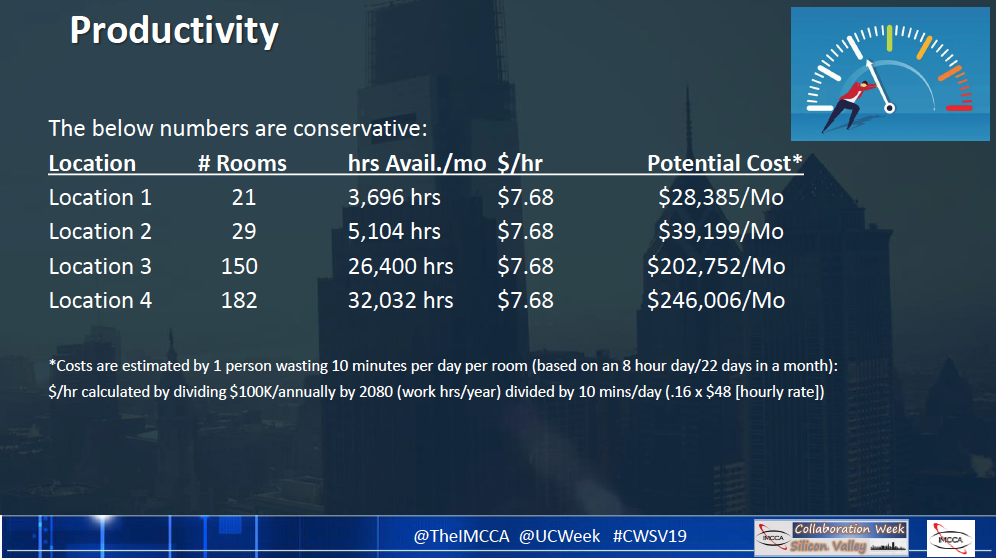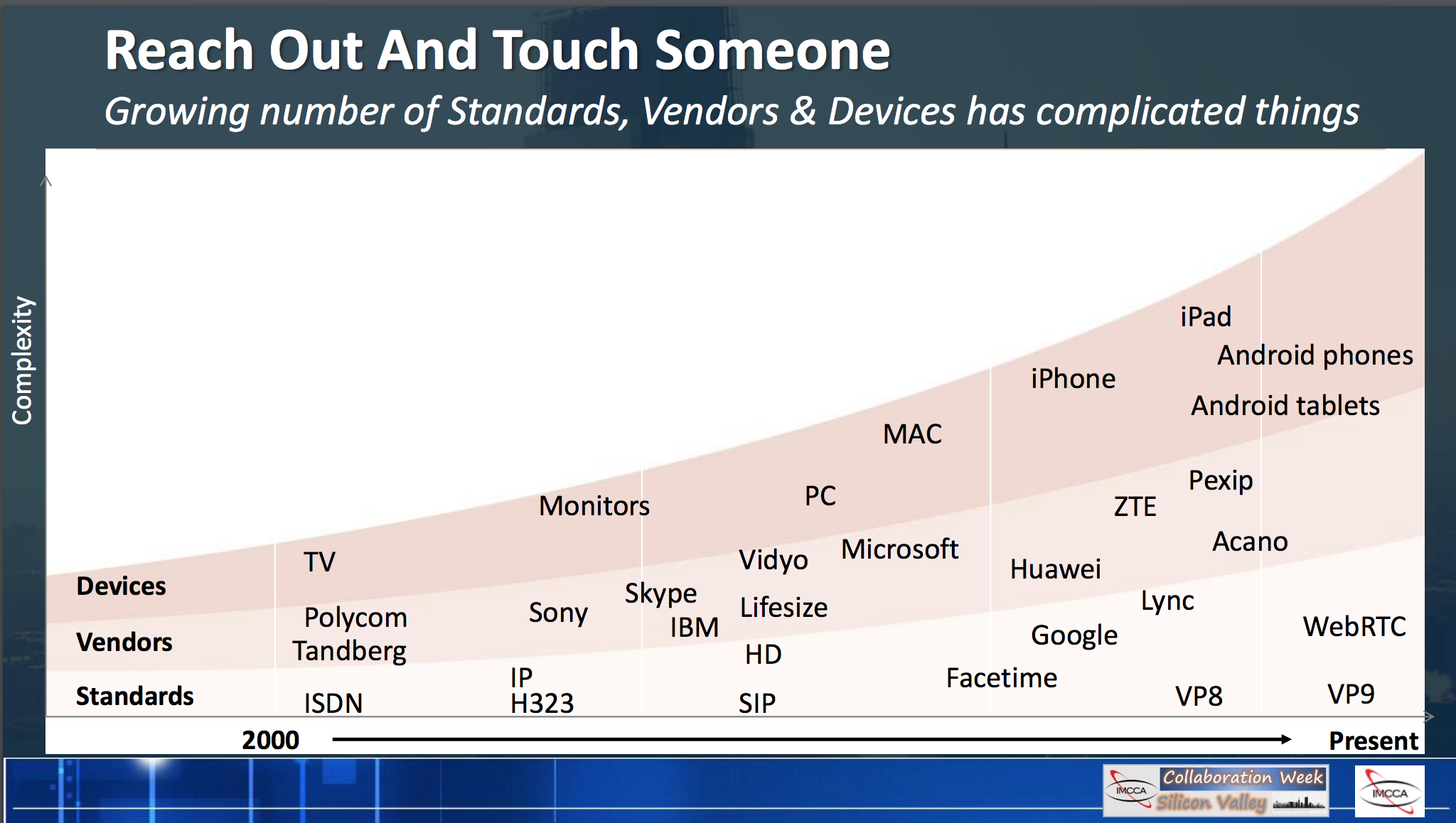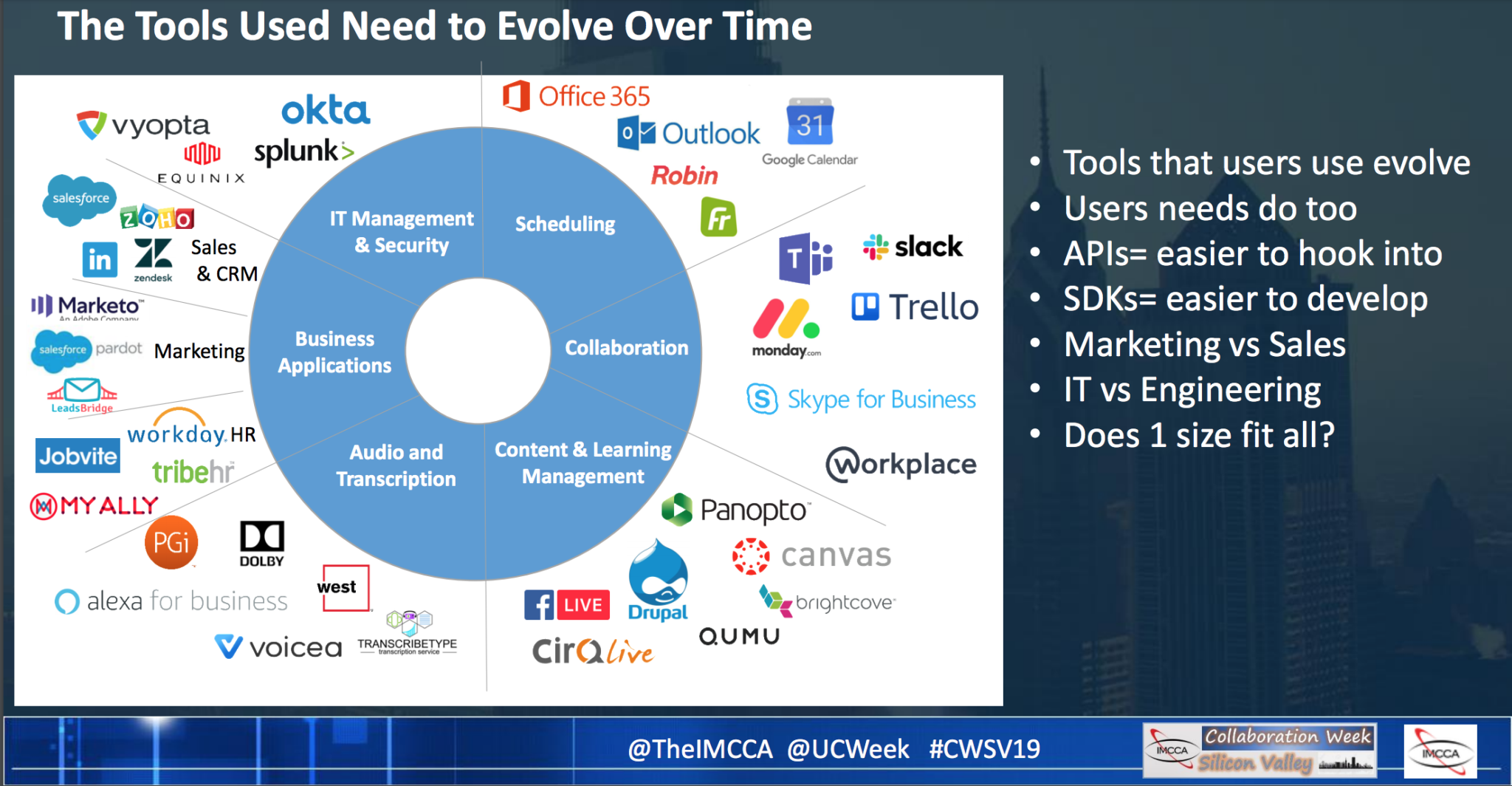
There’s no unity in unified communications & collaboration.
Last week, a number of UC professionals gathered in Silicon Valley to discuss the state of the industry, share experiences, and make predictions about how the industry will evolve in the near future. The event was coordinated by the IMCCA, a non-profit industry association that states as its mission to strengthen and grow the overall unified communications and collaboration industry. The three day event was located at various Silicon Valley locations and featured industry-veterans sharing their perspectives.
And we’re off!
The three-day event started at Intuit’s Mountain View campus with a discussion about the State of Collaboration led by David Danto which kicked off the theme of the three days which is that Unified Communications is anything but unified. You can find the complete set of presentations and photos from the events here.
Next up, Peter Kolak of Intuit discussed the importance of setting standards for Enterprise Collaboration and AV. An interesting analogy that Pete made was between the future of collaboration and the future of other industries, like automobiles. For instance, when we think about the future of automobiles, we don’t talk about the components such as what kind of tires it will have. We talk about what it will be able to do: for instance, self-driving or automation.
Pete sees the organizational priorities as increasing productivity, reducing conference start-time, and increasing platform interoperability to make the conference meeting method more agnostic.

As shown in this slide, companies pay a high cost for inefficiency. To battle this, Pete recommends setting up standards, reviewing them regularly, getting executive buy-in and using your standards to estimate what will be going on in your spaces over the next period that you plan to refresh your rooms.
I’ll call you.
Karl Hantho of Pexip and Robb Woods of BlueJeans rounded out the day with discussions about interoperability. Karl began his session with the break-up of the Bell system and how that affected the development of video. Rather than developing under the monopoly of one entity, video was developed by a number of vendors engaging in coopetition — the state of trying to appear to be working together when really competing behind the scenes.

Just make it work!
Robb Woods stepped in to discuss the challenges of interoperability. He noted that at the end of the day, users don’t care how complicated the UC landscape is. They just want it to work. They want to walk into a conference room or open their laptop, join a call, and not have to worry about whether the technology is going to work. And they’re not just talking about calling.

This slide detailed a portion of the tools that users interact with on a daily basis, and included a nice little shout out to Vyopta on UC monitoring and analytics. Thanks Robb! That aside, you can see that people are dealing with a deluge of tools all in the name of getting a days worth of work done. When they don’t work well together, chaos ensues.
So how do you make all of the things that need to work, work? And what does work actually mean? At this point, we’re talking audio call interoperability and video call interoperability only.
Today, in order to do that you have three options. Stay in the “walled garden” of a specific vendor which ensures that things will probably work in-house but all bets are off once you have to start communicating with those on the outside.
You could also consider an on-prem solution which supports basic interoperability. Cons are that it’s not updated as frequently as the cloud, and you could still run into trouble when trying to dial in or out of network.
A third option is a cloud service which provides more flexibility to those meeting with others outside of their organization and is usually robust in terms of features. Someone’s platform still has to be dominant, but “meet me” meetings are easier for users and hosts.
However you get there, users want a unified experience. Sometimes that means a single service, others it means invisible middleware, but the biggest take-away is that they just want it to work.
That brings us to the end of day one. Look for part two in this series later this week. Spoiler alert! It features a look at the numbers from Nemertes Research analyst and NoJitter contributor, Irwin Lazar and Dave Michels of TalkingPointz equating UC with pizza followed by day three at Amazon which featured a look at the evolution of the modern office with Mark Peterson of Shen Milsom & Wilke.
You don’t have to wait to make sure you’re in the know on the latest in workspace transformation. Join Frost & Sullivan and Vyopta in a webinar titled: Are You Getting The Most Out of Your Meeting Spaces?
REGISTER NOW

Angela Shori is a business writer and technology marketer with over 20 years of experience. She holds an M. A. in Advertising from the University of Texas and writes about unified communications, cloud technology, innovation, and the future of work -- sometimes through the lens of Star Wars. You can find her online at LinkedIn and Twitter.


.png)
.png)